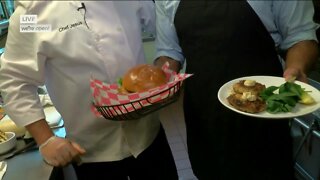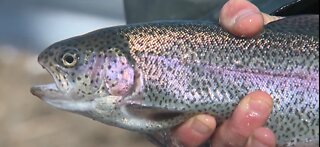Premium Only Content

TILAPIA STOCKING IN BIOFLOC
An experiment was conducted for six months to demonstrate the suitability of biofloc technology in farming system of mono-sex GIFT tilapia Oreochromis niloticus. The experiment was carried out with four treatments and three replicates of each. Three supplemental feeds such as commercial tilapia feed (CF), wheat bran (WB), biofloc technology (BFT) and rice bran + wheat bran (50:50) (RWB)were designated for this experimentation. The stocking density was 125 fingerlings/decimal with a mean initial weight of 2.80±0.03 g of each. Fish were fed at the rate of 6% of fish body weight at the beginning. The feeding rate was gradually reduced to 2% in the third month and finally increased to 3% for rest of the period. After 6 months of rearing, mono-sex GIFT tilapia in CF attained a significantly (P 0.05) higher mean final weight (150.61±7.47 g) and specific growth rate (3.32±0.05) than those of WB, BFT and RWB, respectively. However, there was no significant (P 0.05) difference in survival rate of fish among the treatments. Although overall production was the highest in CF (3803 kg/acre/6 months) receiving commercial tilapia feed, but the net profit was highest (Tk. 99,453.3/acre/6 months) in BFT receiving periphyton due to the lower cost for the production of periphyton. Based on the results of the study, the use of periphyton as feed is more economically profitable than wheat bran and even commercial tilapia feed for the culture of monosex tilapia in ponds.►►Watch
-
 1:57
1:57
JedDport
3 years agoFirst Christmas stocking
40 -
 10:00
10:00
JedDport
3 years agoChristmas Stocking year 2015
11 -
 3:15
3:15
WTMJMilwaukee
3 years agoCooking the blackened tilapia sandwich at Twisted Fisherman
3 -
 1:56
1:56
WEWS
3 years agoStocking of rainbow trout begins in Cleveland's rivers
4 -
 31:40
31:40
CryptoWendyO
50 minutes agoU.S. BANKS ADOPTING XRP?! (URGENT Updates For LINK HBAR SOL)
-
 1:02:16
1:02:16
BitLab Academy
1 hour agoInstitutions Stacking Bitcoin! Altcoins Set To Pump | Key Crypto Targets & Signals
133 -
 1:02:31
1:02:31
Timcast
2 hours agoMASSIVE Power Outages His Europe, CHAOS ERUPTS, Strange Atmospheric PHENOMENON Blamed
119K126 -
 1:57:56
1:57:56
Steven Crowder
5 hours agoThere is No Trump Buyer's Remorse; Why the New Poll Numbers are a Psyop
308K227 -
 LIVE
LIVE
Nerdrotic
7 hours ago $1.50 earnedNerdrotic Nooner 482
668 watching -
 1:57:44
1:57:44
The Charlie Kirk Show
2 hours ago100 Days of Wins + Vance Interview + Tim Pool, WH Reporter | Vance, Sen. Scott, Pool | 4.24.25
38.9K4